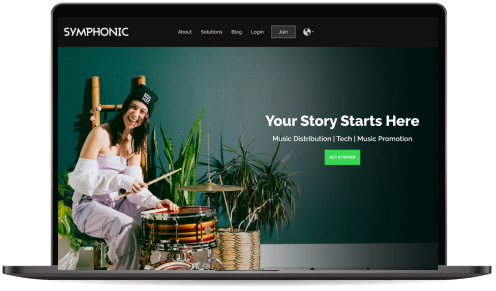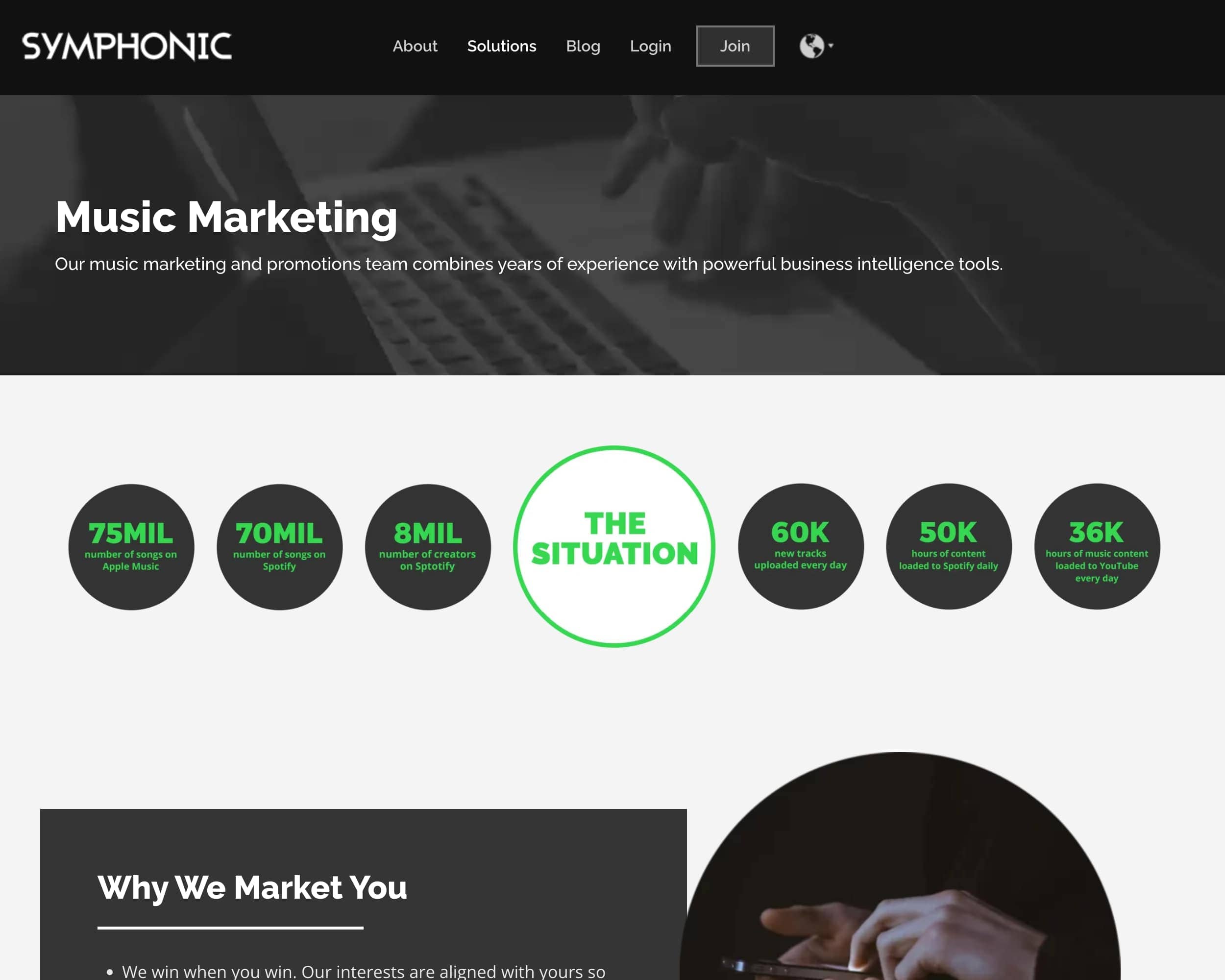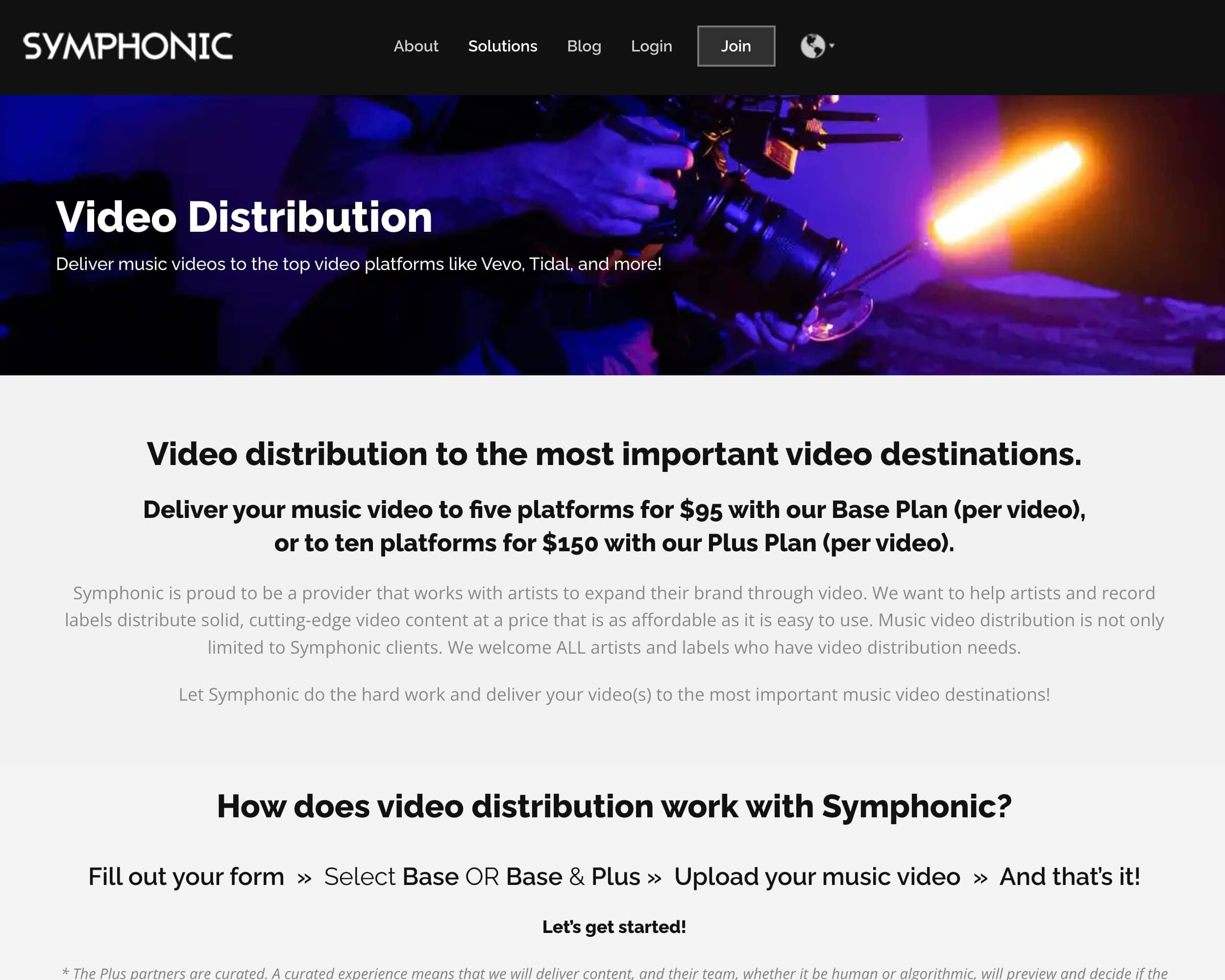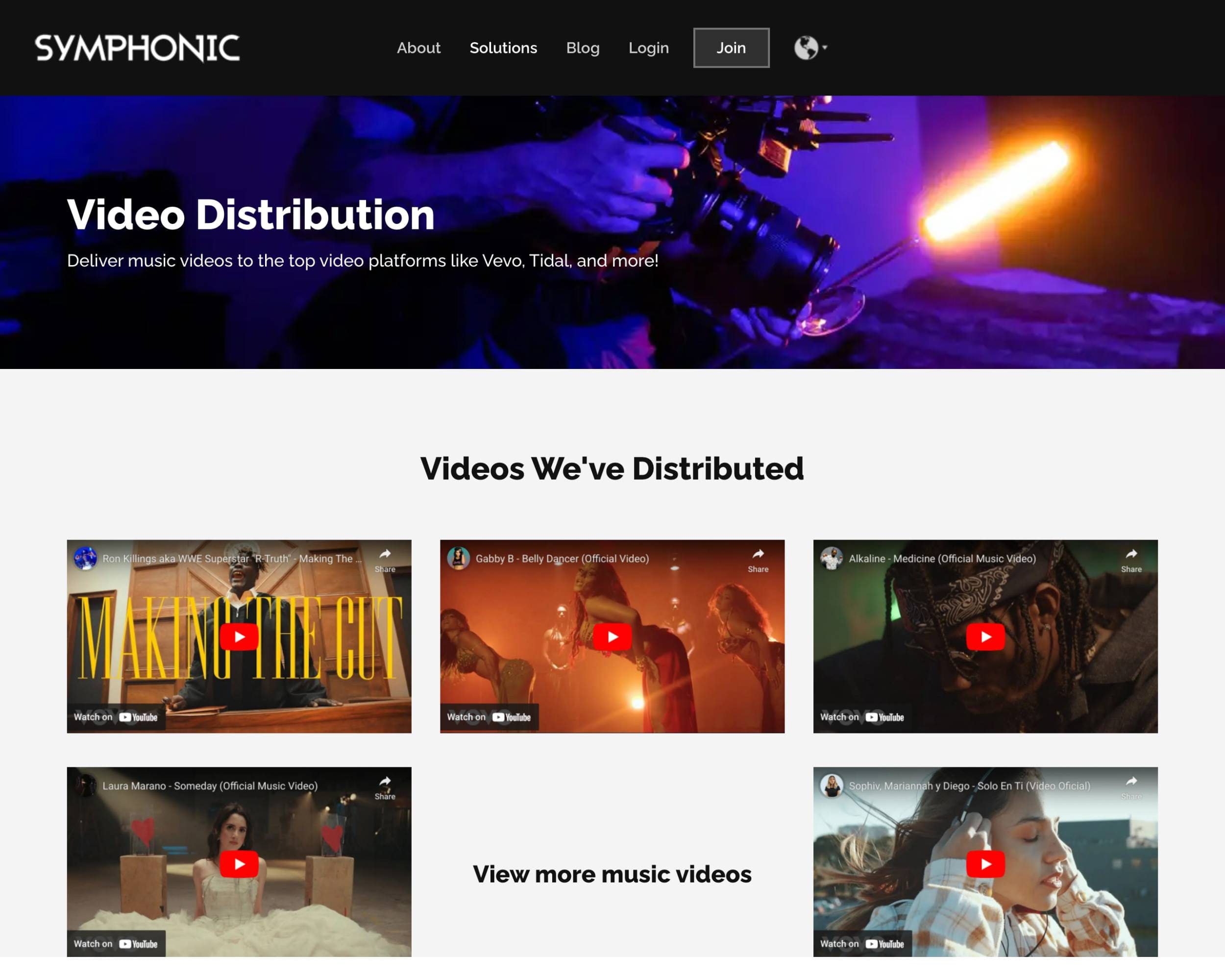
Main Features
- User Management
- Music Catalog Management
- Distribution Management
- Sales & Royalty Tracking
- Payment and Payout Module
- Analytics and Reporting
- API Integration Module
Project details:
Company Name: Symphonic Distribution
Overview: Headquartered in sunny Tampa, Florida with footprints in major music markets across the USA and Worldwide, Symphonic Distribution is one of the leading independent music distribution and marketing companies in the industry. Our team casts a wide net across a multitude of locations, culture, lifestyles, and musical backgrounds. Our diversity makes us unique, and our shared commitment to Symphonic Distribution’s core values unites us. Symphonic Distribution actively leverages recruiting resources that focus on reaching Women, the Black community, the LatinX community, the LGBTQIA community, and other underrepresented groups, ensuring a diverse range of candidates are aware of open positions at our company.
ScreenShots
The screenshots show an overview of the project, development roadmap, and design in detail to you.
Here’s a breakdown of the technology stack for the Symphonic Distribution.
Symphonic Distribution is a digital music distribution platform that provides independent artists, labels, and music creators with the tools and services needed to succeed in the competitive music industry. The platform focuses on delivering music to major digital platforms while also offering solutions for monetization, rights management, and promotional support.
- Yii2 (PHP Framework):
Yii2 is a high-performance, component-based PHP framework. It is designed to be fast, secure, and flexible, making it a solid foundation for the Symphonic Distribution platform. Yii2’s MVC architecture allows for clear separation of logic, presentation, and data management, ensuring that the system remains scalable and maintainable as new features are added. - Zend Framework:
Zend is another PHP framework that emphasizes simplicity and reusability of code. In this project, Zend components are likely used to handle tasks such as authentication, database abstraction, and caching, further enhancing the platform’s scalability and performance. - MySQL (Database):
MySQL is a reliable and widely used relational database management system. It stores essential data such as user profiles, music catalogs, distribution details, and sales analytics, providing the backbone for data-driven features on the Symphonic platform. - jQuery (JavaScript Library):
jQuery is a lightweight JavaScript library designed to simplify HTML DOM manipulation, event handling, and AJAX interactions. In the Symphonic Distribution platform, jQuery is used to enhance the user experience by providing a more dynamic and responsive interface for both artists and administrators.
1. User Management
- User Registration and Authentication:
Allows artists, labels, and distributors to register, log in, and manage their accounts. - User Roles and Permissions:
Define and assign roles such as Admin, Artist, Label, and Distributor with respective permissions and access levels. - Profile Management:
Enables users to update personal information, payment details, and social media links.
2. Music Catalog Management
- Upload and Metadata Submission:
Artists and labels can upload tracks, albums, and add metadata such as song title, genre, album art, and release date. - Batch Upload:
Bulk upload functionality for managing large catalogs. - Metadata Validation:
Automated or manual validation of music metadata before submission to digital platforms.
3. Distribution Management
- Platform Integration:
Distribute music to multiple digital platforms (Spotify, Apple Music, Amazon, etc.) from a single dashboard. - Release Scheduling:
Manage release dates and automated distribution to selected platforms. - Territorial Rights Management:
Manage regional and country-based distribution rights for each release.
4. Sales & Royalty Tracking
- Real-Time Sales Data:
Track real-time sales, streams, and download data from digital platforms. - Revenue Split Calculation:
Automated calculations for revenue splits between artists, producers, labels, and other stakeholders. - Royalty Reports:
Generate detailed reports showing earnings from all distributed content, sorted by platform, artist, or release.
5. Payment and Payout Module
- Payment Gateway Integration:
Integrate with payment processors for royalty payouts to artists and labels. - Payout Scheduling:
Allow users to schedule payouts based on thresholds, payment frequency, or manual request. - Tax and Compliance Reporting:
Ensure accurate tax reporting and regulatory compliance for all financial transactions.
6. Content Monetization and Licensing
- Licensing Management:
Manage sync licensing for movies, commercials, and other uses. - YouTube Content ID Integration:
Monetize music content on YouTube through Content ID claims. - Publishing Administration:
Help users manage publishing royalties from non-streaming revenue sources.
7. Analytics and Reporting
- Dashboard Analytics:
Provide artists and labels with an overview of streaming data, sales performance, audience demographics, and more. - Platform-Specific Analytics:
Drill down into performance by platform (Spotify, Apple Music, etc.). - Custom Reporting:
Allow users to create custom reports based on specific criteria like region, platform, time period, etc.
8. Marketing & Promotion Tools
- Social Media Integration:
Enable users to promote their music across various social media platforms directly from the dashboard. - Smart Links and Pre-Save Campaigns:
Generate smart links and pre-save campaigns for upcoming releases. - Email Marketing:
Build and manage email marketing campaigns to engage fans and build artist/label brands.
9. API Integration Module
- Third-Party Service Integration:
Integration with various third-party services like analytics tools, playlist curators, or content ID platforms. - Data Sync and Automation:
Synchronize data with external platforms for distribution, revenue, and metadata updates.
10. Admin Panel (Back-office)
- Content Approval:
Allow administrators to review and approve content before it’s submitted to platforms. - User Management for Admins:
Admin control over user roles, permissions, and accounts. - Dispute Resolution Tools:
A section for managing user disputes regarding royalties, rights, or content claims.
11. Notification & Alerts System
- Email & SMS Notifications:
Notify users about key events such as new releases, payout updates, or system alerts. - Push Notifications (Optional):
Mobile push notifications for real-time alerts related to the platform.
12. Customer Support & Ticketing
- Help Desk Integration:
Provide integrated ticketing and support services for artists and labels. - FAQs and Knowledge Base:
A self-service module that provides guidance on common user queries. - Live Chat (Optional):
Enable live chat support for real-time issue resolution.
These modules ensure that the Symphonic Distribution platform provides comprehensive tools for artists, labels, and administrators to manage their digital music distribution, monetization, and analytics effectively.




